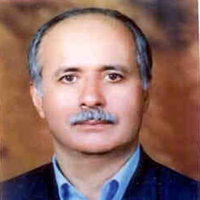The Modeling of Interaction between NGOs Function and Rural Optimal Governance Case: plain of Hossein-Abad Ghinab in Sarbisheh County
Analyzing experiences and ideas of local management suggests that to keep a balance between social, economical and environmental demands of the present and future generation through personal sustainable development has lead to a paradigm shift in affairs administration.
The paradigm shift means to use some concepts like citizenship participation, civil society, transparency, liability, justice and equality in parallel with efficiency of the local government, so the local government is introduced as a prerequisite for the sustainable development and a good pattern for the rural and urban management. The good governance is one important issue considered in the development literature from 1980s and afterwards. Governance as a modern idea is a substitute for the government concept. International institutions of the economical policy like the World Bank, the United Nations Development Program and the International Monetary Fund introduce the governance as the key to development puzzle. As the good governance of the local management may lead to much more efficient usage of resources and it provides the background for economical, social and urban development in local regions. Accordingly, it is of the utmost important in developed countries so as to establish and institutionalize the civil society.
It is possible to identify and apply several approaches and mechanisms to provide a basis for rural participation in the good governance process. Among them, development of non-governmental organizations (NGO) not only is considered as the most important and efficient systems of enjoying active and comprehensive participation of local society but also it acts as the third section concurrent with the private and public sections, market and government, respectively. Accordingly, NGOs are enumerated as a participant of local governments for decision making and developing geographical position.
The propagation of rural development teams as a kind of NGOs in the Hussein Abad plain, Sarbisheh, Iran, was began in 2005 concurrent with the international program of carbon sequestration. The present research aims to assess the communication paradigm between the efficiency of NGOs with the rural good governance in the Hussein Abad Plain.
The present study is an applied research in terms of objectives and the design of this descriptive-analytical study is correlation. Data was collected by field and library studies. The questionnaire technique was applied in the library method. Questionnaire or the research tool was designed in two levels as follow:- The first level was the village questionnaire by which the rural good governance was investigated in the framework of 8 issues and 24 indices. Rural municipalities and councilors of villages in the Hussein Abad Plain were asked to answer questions in the framework of a numeric norm (9, 1, 3, 5, 7) in which 1 and 9 suggest the lowest and highest performance, respectively.
- The second level was the questionnaire of families belong to rural development teams through which social and economical influences of NGOs performance (rural development teams) were investigated by 26 indices. Answers were also collected by the Likret scale including, very low, low, intermediate, high, very high. The SPSS software was applied to analyze collected data for the descriptive statistics; moreover, the communication model between the efficiency of NGOs (rural development teams) and the rural good governance in the Hussein Abad Plain was analyzed by the LISREL8.5 software.
Discussion and
According to conducted studies in Hussein Abad Plain, Sarbisheh, Iran, it is suggested that, rural development teams provide villagers with access to credits, so employment and entrepreneurship in the under studied region seems to thrive and consequently the family income, permanent and temporary, is significantly raised.
Studying the social affects levels of rural development teams (table 2) suggests that, in parallel with development and permanence of the teams, the highest level of its influence on supplying solar energy was 3.9.
The average score of the rural good governance in the under studied region was 5.1. Moreover, components of the rural good governance, collectivity and participation had the highest average score (5.7).
According to results, it can be said that, there is a significant relationship between the performance of NGOs and the rural good governance in the Hussein Abad plain, Ghinab.
Moreover, based on conducted studies and obtained structural model it could be said that evolution in economical circumstances provides a good situation for reformations of the social aspect of NGOs performance in villages of the Hussein Abad plain, Ghinab.
The level of rural good governance in the understudied region was intermediate. Among components of the rural good governance, collectivity and participation were at the highest level. Then, components like transparency, efficiency, liability, legislation governance, responsibility and consensus would be mentioned, respectively. The main reason for the low level of consensus is almost related to adhere to the belief of previous tribalism; consequently some believe that women have not the same position like men for decision making and governance.
In the paradigm related to the influence of the NGOs performance (rural development teams) on rural good governance in the Hussein Abad plain, Ghinab, it is obvious that a significant amount of variation shifts of the rural good governance (48%) could be specified through the performance of rural development teams.
Again, according to the model, it can be concluded that the economical aspect of the NGOs performance not only have direct consequences on good governance, but also by affecting the social aspect of rural habitations, have an indirect effect on the quality of good governance in rural regions.
- حق عضویت دریافتی صرف حمایت از نشریات عضو و نگهداری، تکمیل و توسعه مگیران میشود.
- پرداخت حق اشتراک و دانلود مقالات اجازه بازنشر آن در سایر رسانههای چاپی و دیجیتال را به کاربر نمیدهد.



